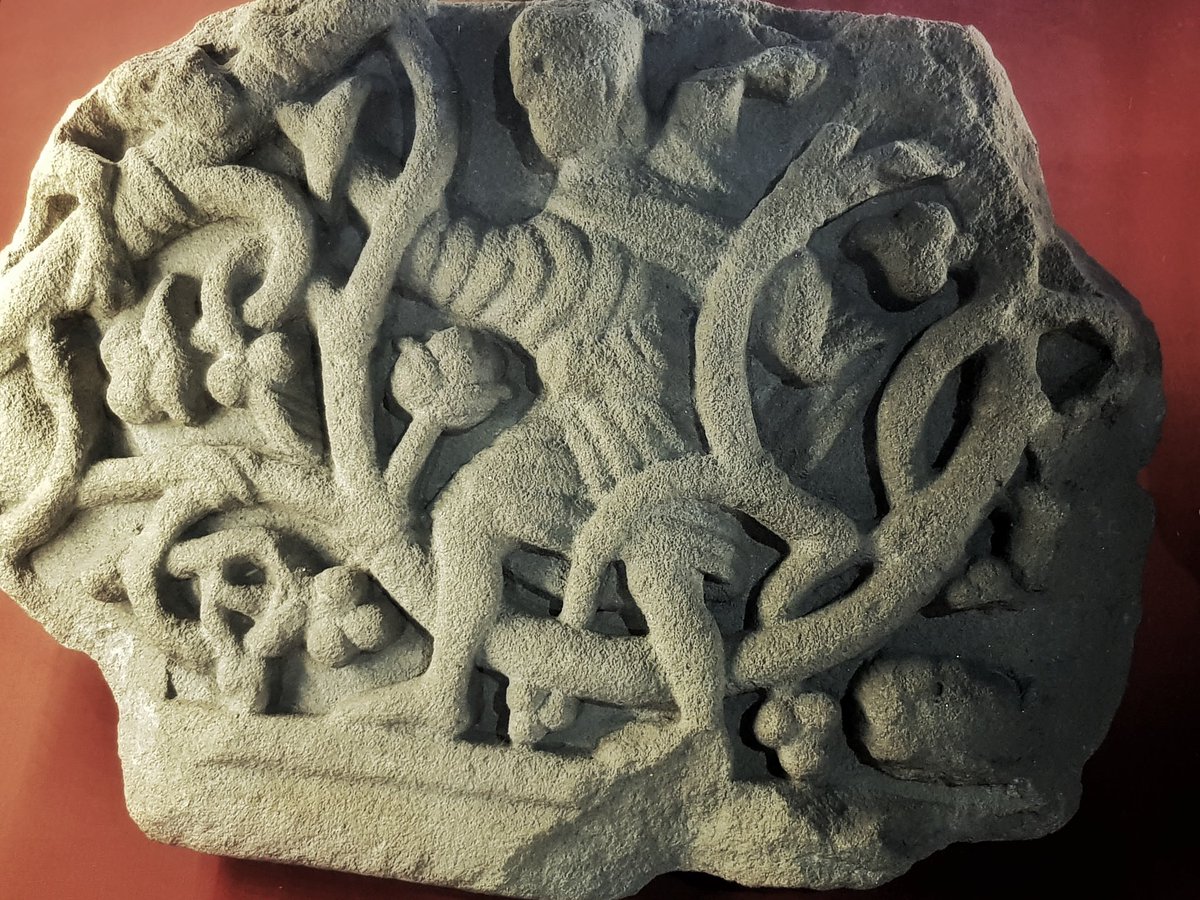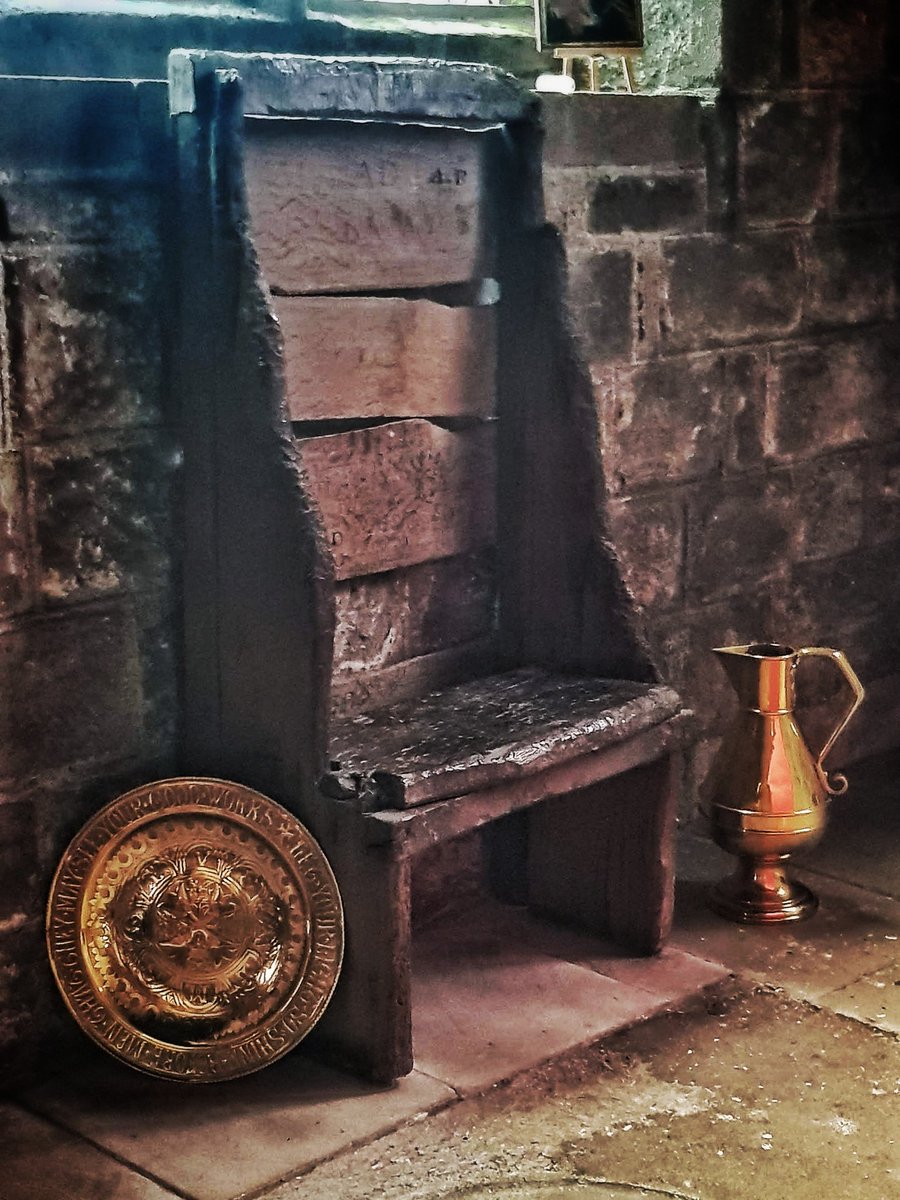But go North middle aged man. So to Walford. Next to the early C16th bridge over the River Allen is the old Walford Mill am 1800 rebuild of a C16th original. 

Sad dead pub, I remember it as The Case is Altered, later the Crown and Anchor now a dead office. Arts and craft exterior on an C18th centre. Another attempt to knock it down failed last month. With all the new housing, perhaps a beer flavoured future could arise? 

The River Allen. I've just checked it on wiki, and blow me down, the photo they use must be from the same footbridge. I saw plenty of trout, but I learn that Crayfish plague has decimated the local population of those crustaceans. 



In the previous pic, a little white smudge was this handsome chap. He footled up and, having produced a huge turd, floated at me, with a sense of committed deliberation.
I just love the mercury like balls of water on his back.
I just love the mercury like balls of water on his back.

I don't know why I am drawn to dead trees,this one on the Allen floodplain, but I am. Maybe it's the sculptural, skeletal quality donated by death 

High Hall, of 1670, Pevsner intimates it might be by Roger Pratt, who built Kingston Lacey at much the same time. This was a present to Sir John Bankes's son in law.
Task. Find a father in law like Bankes.
Task. Find a father in law like Bankes.

Across the Allen again, and just past some scrub floodplain, and, a private cricket pitch, which certainly beats a metalled tennis court or an unheated pool. 

The pitch appears to be part of the old rectory, built by the Carr-Glynns. (They seem to get everywhere round here). 

On the road side of the Stanbridge old Rectory, there is an old school room, these wonderful C19th bargeboards and a Victorian postbox. With banded Dorset stockbrick and flint. Carr-Glynn philanthropy in motion. 

The neo-norman St Kenelm, Stanbridge, of 1860 is now redundant. It was the mausoleum and estate church for the Carr Glyns. @friendschurches this one needs a friend, its OK now, some quarry windows cracked. But for how much longer? 

Looking down the nave towards the chancel showing the Norman chancel arch, and more Glynns.
Not seen is the (12th relief of Kenelm, above the S door. (@crsbi photo)
He has a very long arm... Mr Tickle styly.

Not seen is the (12th relief of Kenelm, above the S door. (@crsbi photo)
He has a very long arm... Mr Tickle styly.

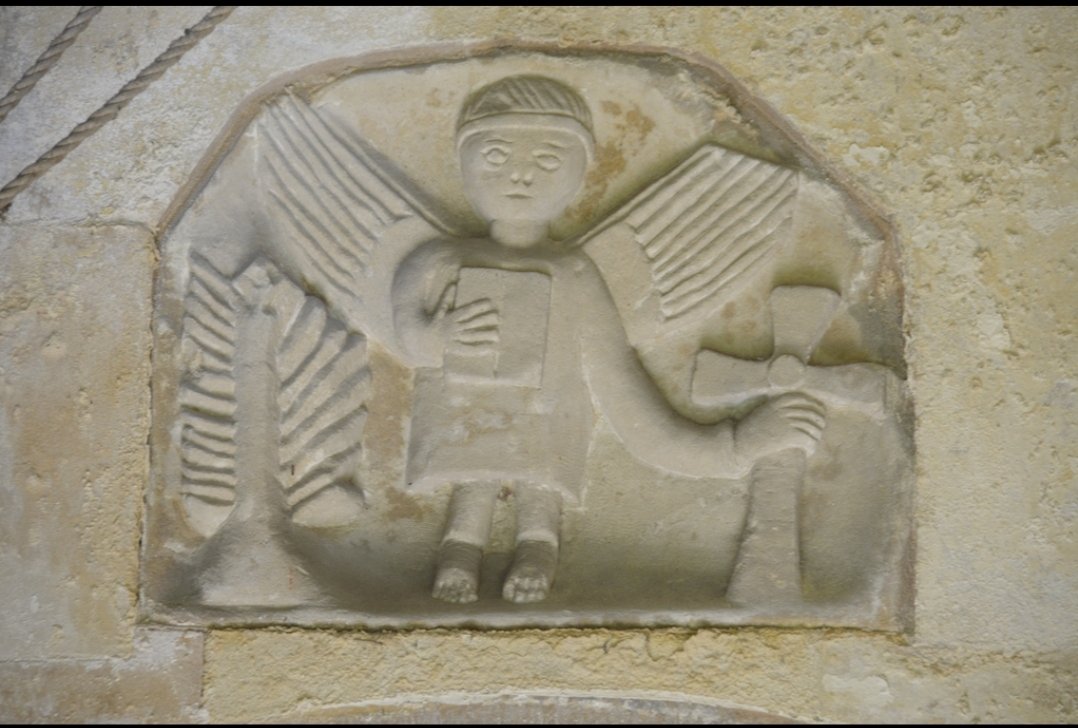
Many more Glynns to be found in St Kenelm's churchyard, the celtic cross on the right to the Glynn that had the church built. 

A couple of final details from St Kenelm, Stanbridge, by George Evans, the neo-norman door, and a sliver of the art-nouveau West window.
I really do want to get inside this one, that C12th sculpture looks a dream.

I really do want to get inside this one, that C12th sculpture looks a dream.


In Hinto Parva (there is no Hinton Magna) suggestion it is small and owned by the church - probably the Abbey at Wimborne.
6 cottages make 3 sides of a square. There is a joint pump, within its own porch.
These days they do have piped water, or least they say they do.
6 cottages make 3 sides of a square. There is a joint pump, within its own porch.
These days they do have piped water, or least they say they do.

Witchampton bridge, of 1795, threatens deportation if damaged (one of 10 in Dorset that do) and also bans traction engines, a life packed with incident for such a charming thing. 





Witchampton used to have two flour mills, this one's undershot wheel, was still complete in 1958 according to the elderly varnished info paddle in the church.
The mill is in the Domesday book, but this is C18th. The collapsed wheel is C19th.

The mill is in the Domesday book, but this is C18th. The collapsed wheel is C19th.


If Hinton Parva had a pump, Witchampton - the name is celto roman Wic, heame, for enclosure, tun, saxon for settlement - has an C18th fountain. All very fashionably Dutch, if you ignore the flint.
English heritage say 'picturesque', I say, c'mon chaps, surely you can tidy it up?
English heritage say 'picturesque', I say, c'mon chaps, surely you can tidy it up?

Toward the river, and very PRIVATE...
Is the ruin of the Abbey, except it was never a church, but a C13th manor of the Maltravers. John, the first Baron amongst other things, torched Bridgnorth (@JohnGill789) and ordered the infamous red hot poker.
Is the ruin of the Abbey, except it was never a church, but a C13th manor of the Maltravers. John, the first Baron amongst other things, torched Bridgnorth (@JohnGill789) and ordered the infamous red hot poker.
https://twitter.com/Towler/status/1513551213362651145/photo/1

The C1530 Abbey House, the right hand gable original. It was in their back garden that one of my favourite pieces @britishmuseum was found, this delightful Anglo-Saxon chesspiece, from a roman temple, that was repurposed in the C8th. 



Adding weight to the idea that Abbey House was built for the Rector is this 1530s diapering, of an Easter golgotha.
I've never seen anything like it.
Can one fall in love with ancient and burned bricks?

I've never seen anything like it.
Can one fall in love with ancient and burned bricks?


St Mary, St Cuthberga and All Saints seems a tad greedy for dedication when some churches have none. It has the Dorset habit of having a C15th tower, and complete Victorian rebuild. By Peniston father and son between 1833 and 1844. 

So in through the perpendicular West door and up the simple gothik nave. That East window.. could it be? 




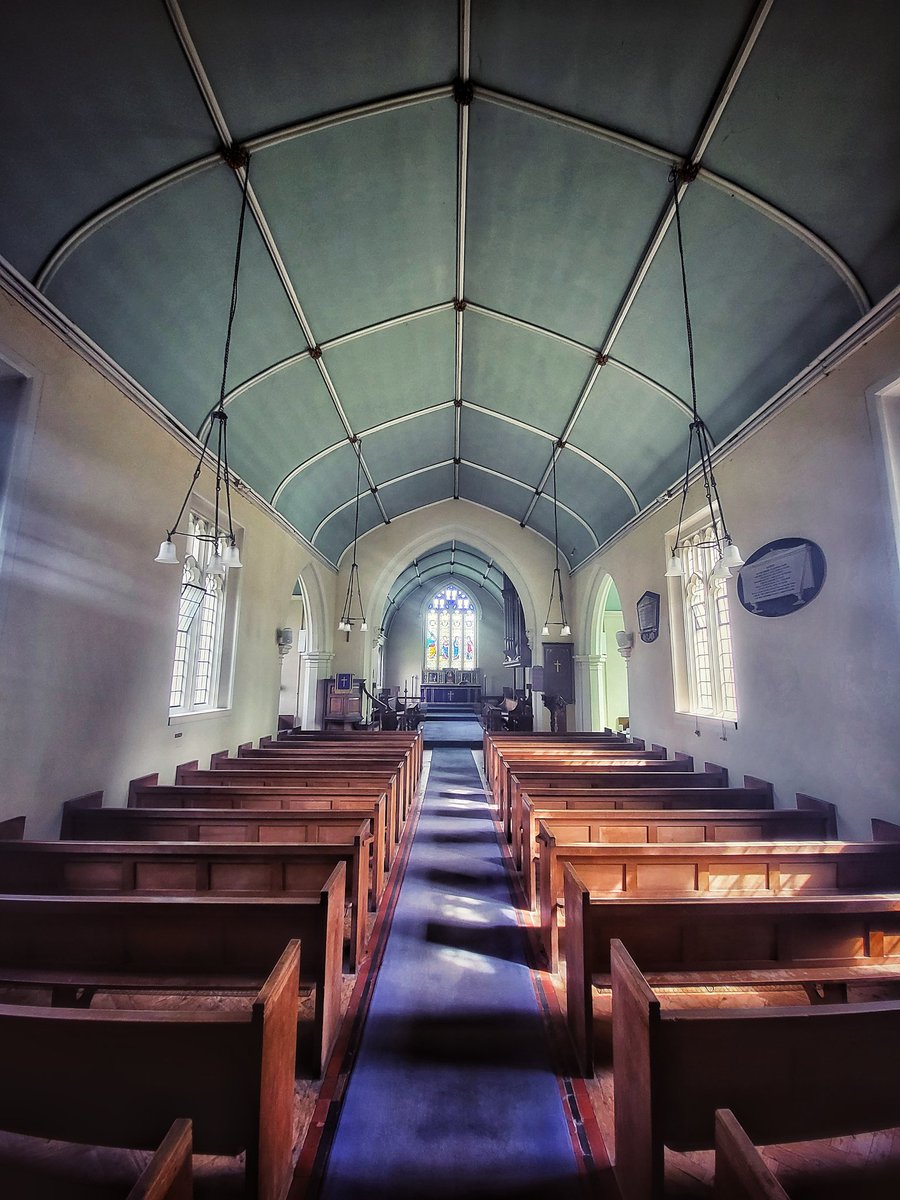


Yes it is, a rather fine 1938 Ninian Comper 4 light, a fine reredos by Whipple and Co of 1948.
That rural churches have such wonders, over centuries, points to the level of private artistic patronage, outwith London, that needed no Arts Council.
Maybe we still see it in gardens?



That rural churches have such wonders, over centuries, points to the level of private artistic patronage, outwith London, that needed no Arts Council.
Maybe we still see it in gardens?




For #momentomorimonday, loving the ampersands.
'Within this toombe both youth & age doe lye confirming God's decre that all mvst die. impartiall death, thovgh crvell that dost strike the infant & the aged both alike.
Hodie mihi cras tibi'
Today it's me, tomorrow you.


'Within this toombe both youth & age doe lye confirming God's decre that all mvst die. impartiall death, thovgh crvell that dost strike the infant & the aged both alike.
Hodie mihi cras tibi'
Today it's me, tomorrow you.



The woodwork in the choir, including the organ case date from 1898, rather fine Arts and Crafts work, almost predating a sort of gothic deco. Unnamed, but rather beautiful. 



More woodwork, and this beauty of a lecture from 1912, again unsigned. But clearly @NotPodium 



These Uvedale monuments were moved here in 1977 from the now redundant Moor Chrichel church. Suffice to say, the Uvedales were mighty proud of their antecedents. 





John Cole of 1636 has a handsome monument. I note that his heraldic bull has gilded horns, rear hooves and, well yes that too. 



Charles Napier Sturt married Lord Cardigan's sister and went to the Crimea, he took with him into the Grenediers a number of estate workers, and put up this rare memorial to those that fell. He himself almost died. 

And finally from St Mary's, Witchampton, another Glynn. C of E, twitter note. He was Rector for 67 years, from 1829 to 1896. 

To the Witchampton and Crichel Club, of 1580, founded as a Conservative club in 1909, the steward was paid, but could be summarily dismissed if two committees members simultaneous could prove him drunk.
Hugely friendly, and no nonsense.
Hugely friendly, and no nonsense.

The Cranborne Chase is littered by our past, here a sheep drove crosses the Roman Road from Sarum to Badbury, my guess is that the drove predates the road. 

Whichampton is very cute, the 1885 gates to Chrichel house, are imposing, but the old post office sets it off. As for that matter does the Dorset cob meets fishnet stocking aspect..
As for no parking, seriously the post is collected 6 times a week. Excessive caution.


As for no parking, seriously the post is collected 6 times a week. Excessive caution.



There again the Chase is littered with, litter. The amount of broken glass in this fly-tip is terrifying, dangerous for those trying to clean and some fauna too. 

I might have mentioned I love laid hedges. Here within the geometric horror that are recently strimmed and mangled bushes can be seen the ghost of a once laid hedge, the thick dark horizontal of old hawthorne. 

The Roman Road continues, this place, a pastoral fairyland.
Those banks of vegetation?
Wild garlic.
The smell?
God's kitchen.

Those banks of vegetation?
Wild garlic.
The smell?
God's kitchen.
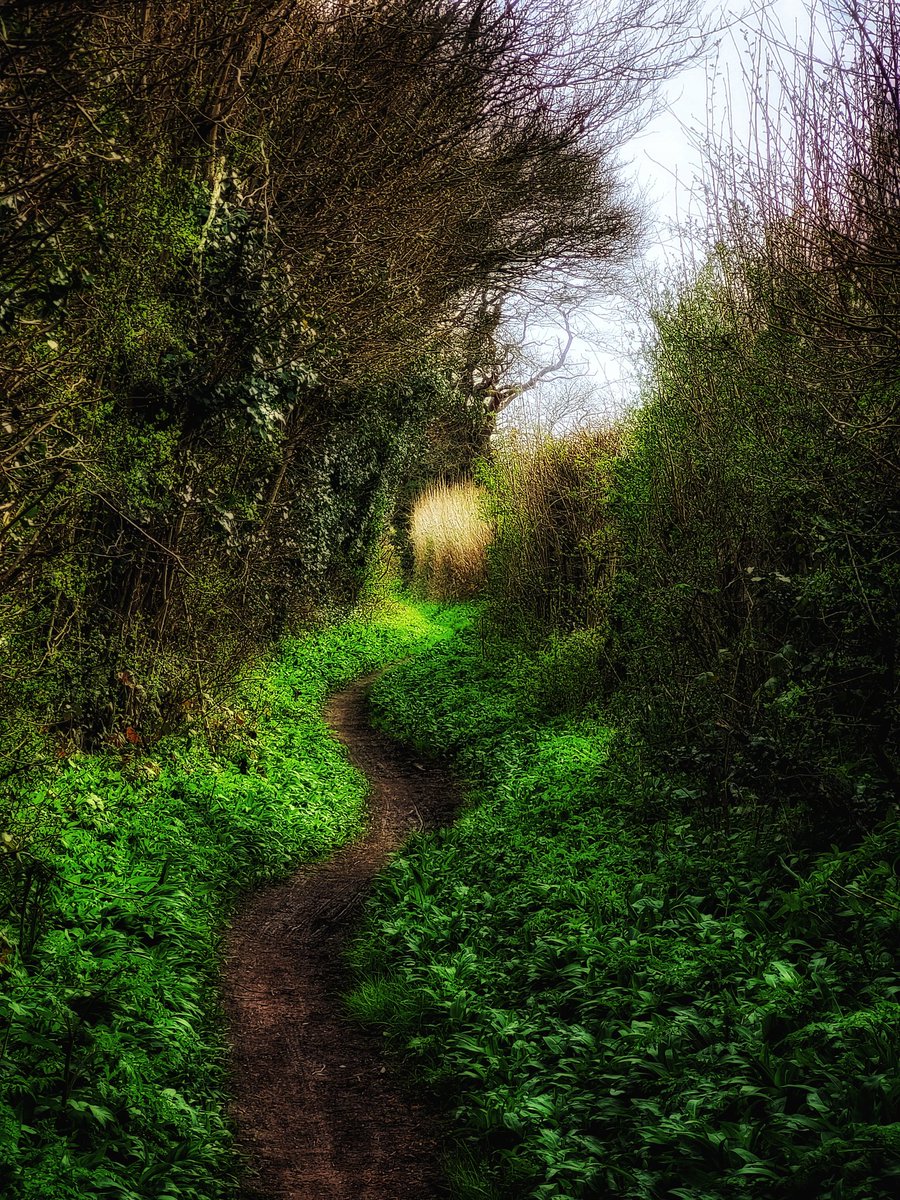

Hazel coppicing, with stacked withies with a copse floor oozing bluebells to come.
No I'm not saying where.
No I'm not saying where.

Three lane rural highway, man, horse, livestock.
Right in the distance is the groundbreaking organic @HemsworthFarm which sits in its own deserted village, Domesday mentioned.
Right in the distance is the groundbreaking organic @HemsworthFarm which sits in its own deserted village, Domesday mentioned.

Now this, I think is a rarity, its a Sphaerites Glabratus, and little seems to be known about it other than it is rare and loves fungus.
The red fluid on the grass appeared in globules at its knees, when I tapped it with a blade of grass, some form of toxic defence, I guess.
The red fluid on the grass appeared in globules at its knees, when I tapped it with a blade of grass, some form of toxic defence, I guess.

• • •
Missing some Tweet in this thread? You can try to
force a refresh



















